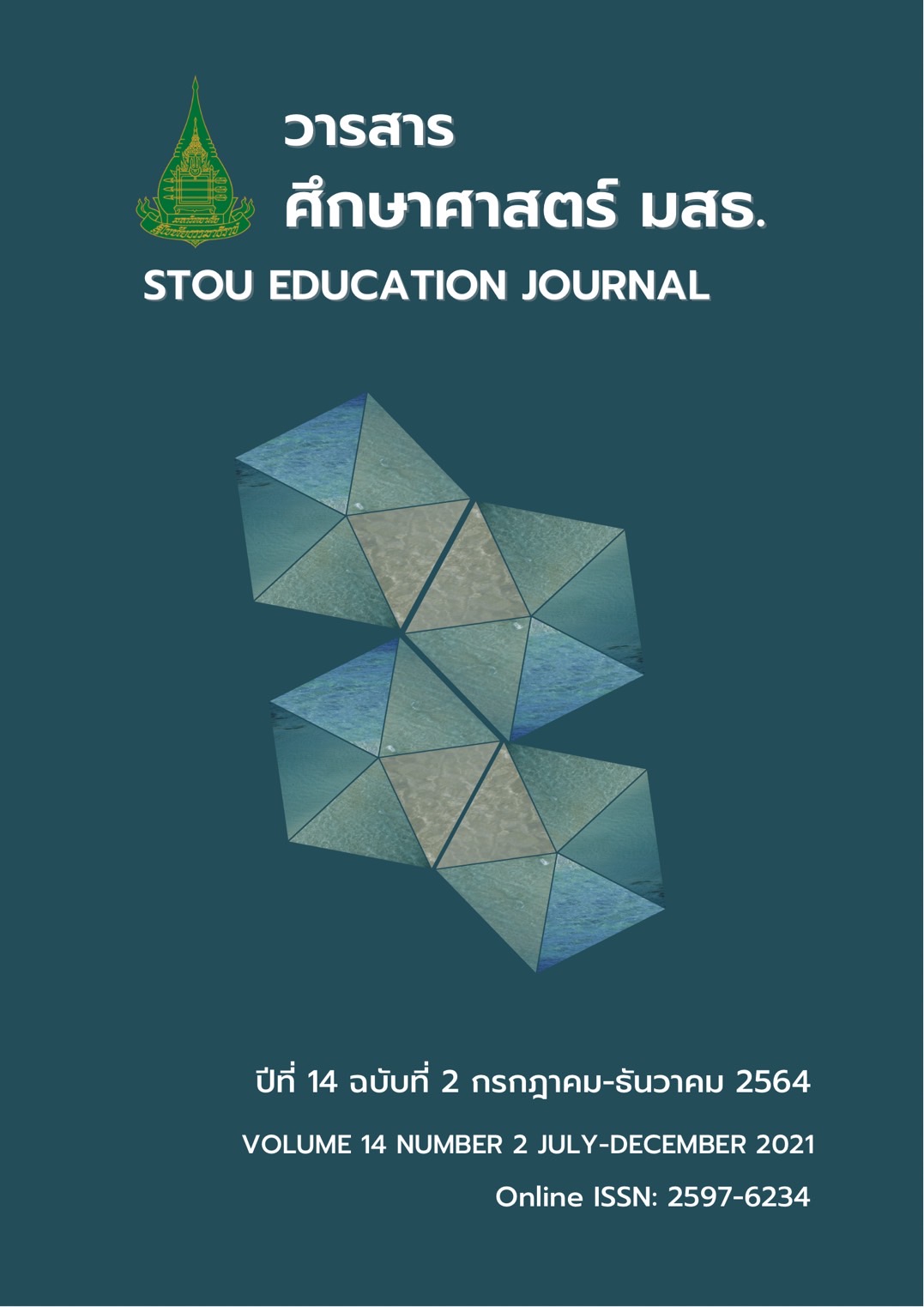The Scenario of an Evaluation and External Quality Assurance Model of Higher Education in the Next Decade
Main Article Content
Abstract
The objectives of this research article were 1) to analyze and synthesize phenomena and components of an evaluation and external quality assurance model of higher education; and 2) to develop the scenario of an evaluation and external quality assurance model in the next decade. The research process was EDFR technique. Key informants totaling 21 persons comprised: the persons who have direct and indirect power in formulation of policies concerning the evaluation and external quality assurance of higher education, the persons who have duty and roles in the operation to respond to the above-mentioned policy, academics on evaluation and external quality assurance and employers of graduated students. The research results show that 1) the phenomenon and components of the external higher education quality assurance model consist of 5 components: (1) a paradigm of higher education institutions that has changed from theory-based to practice-based; (2) the goal toward collaborating with other organizations to enhance what they do not specialize in; (3) the criteria dimension: ranking of higher education institutions by group and determining common criteria that measure both the efficiency and competence of graduates with general and specific criteria and indicators; (4) innovation methods that aim to assess the external quality of educational outcomes by giving freedom to the production process of higher education institutions; and (5) confidence in monitoring the outcomes and impacts that should be monitored every year in order to evaluate from the beginning in the form of formative assessment; and 2) the scenario of the model in the next decade consists of four main components: (1) the concept of the evaluation and external quality assurance model for higher education in the next decade consists of changes, mobilization, flexibility, stakeholders, and the roles of learners; (2) the components of the model consist of 5 components, namely, the paradigm, goals, criteria dimensions, innovation methods, and confidence; (3) trends of the model; and (4) the process of the model in the next decade. All components are interrelated contributing to the quality of education for lifelong learning in the modern world.
Article Details
References
จุมพล พูลภัทรชีวิน. (2551). การวิจัยอนาคต. วารสารสมาคมนักวิจัยในความอุปถัมภ์ของสภาวิจัยแห่งชาติ, 13(2), 9 - 13.
จุมพล พูลภัทรชีวิน .(2530 ). รวบรวมบทความวิจัยการศึกษาเทคนิคการวิจัยแบบ EDFR. กรุงเทพฯ: รุ่งเรืองสาสน์การพิมพ์.
วิชัย วงษ์ใหญ่ และมารุต พัฒผล. (2562). การจัดการเรียนรู้ในยุค Disruptive Innovation. กรุงเทพฯ: ศูนย์ผู้นำนวัตกรรมหลักสูตรและการเรียนรู้ มหาวิทยาลัยศรีนครินทรวิโรฒ.
วิจารณ์ พานิช. (2555). เปลี่ยนรูปแบบการเรียนการสอนอุดมศึกษาโดยสิ้นเชิง. สืบค้นจาก https://www.gotoknow.org/posts/512781
Blackstock, D., Cosnard, M., Flierman, A., Hopbach, A., Lund, O. and Walsh, P. (2019). Reflecting on the future of quality assurance. Retrieved from https://enqa.eu/wp-content/uploads/2019/10/External-QA_Future-Perspectives.pdf
Chelimsky, E. (1985). Old Patterns and New Directions in Program Evaluation. In Program Evaluation: Patterns and Directions, Vol.6, edited by Eleanor Chelimsky, 1–35. Washington, DC: American Society for Public Administration.
Cheng, M. (2010). Audit cultures and quality assurance mechanisms in England: A study of their perceived impact on the work of academics. Teaching in HE, 15(3), 259–271.
European Association for Quality Assurance in HE (ENQA), European Students’ Union (ESU), European University Association (EUA), and European Association of Institutions in HE (EURASHE). (2015). Standards and quidelines for quality assurance in the European HE Area. Retrieved from https://enqa.eu/wp-content/uploads/2015/11/ESG_2015.pdf
Harvey, L., and Askling, B. (2003). Quality in HE in Begg, R. (ed), The dialogue between HE research and practice. Netherlands: Springer.
Hou, A. (2012). Mutual recognition of quality assurance decisions on HE institutions in three regions: A lesson for Asia. HE, 64(6), 911–926.
Lomas, L. (2003). Embedding quality: The challenges for HE. Paper presented at the European Conference on Educational Research, University of Hamburg.
Varonism, E. M. (2014). Most courses are not born digital: An overview of the Quality Matters peer review process for online course design. Campus-Wide Information Systems, 31(4), 217–229.


